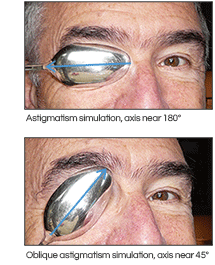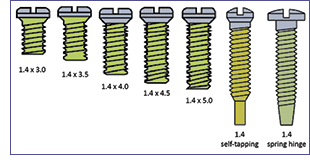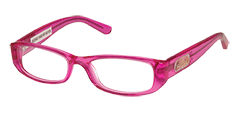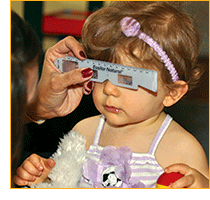|
Your monthly guide to staff training outside the box
Eyes / Lenses / Fitting Lenses / Free-Form / Frames / Sunwear / Patient Solutions / In-office / Standards
PATIENT SOLUTIONS: Pearls
|
"Pearls" that are passed from one professional to another are commonly defined as ideas that are considered good, valuable and/or a clever discovery that are helpful day to day. In CE courses and as part of the Opticians Handbook, many pearls have been offered; here are a few of the more popular ones.
|
SUMMARIZE THE PATIENT'S VISIT
Linda Hardy, CPOT, COA, LDO, NCLC, ABOC
When a patient is being escorted to checkout, the person doing the checkout should be given a summary of what is going on with the patient, such as "Ms. Smith was dilated." This lets the receptionist at checkout to provide dilation glasses. Or "Ms. Smith is trying contacts." This informs the receptionists they need to schedule a follow-up appointment and also gives the patient finalization of their appointment. This helps a patient understand and feel included in their vision care. Explain to the patient they will be called when their glasses come in or that they will be recalled for their next visit.
See Plus »
|

ASTIGMATISM
Eyes are either "too strong" (myopia, too long) or "too weak" (hyperopia, too short) or a combination of two powers (astigmatic). The cornea is most likely shaped more like a spoon (we really like this illustration so have a spoon handy). Focusing is different horizontally and vertically so two powers are needed to correct the eye.
See Plus »
|
CLINICAL TIP
By Palmer R. Cook, OD
If the frame of choice has a temple attachment at the top of the eyewire, the available range for changing the near vertex distance is twice as great as it would be if the temple attachment were halfway from the top of the lens to the bottom. This is especially important to keep in mind when fitting first-time progressive lens wearers or difficult to fit patients.
See Plus »
|
IT'S A SNAP: SPRING HINGE REPAIR
By Preston Fassel, BS

When a spring hinge screw is lost or breaks, the internal spring contracts, placing the holes out of alignment with the frame front barrels. In order to make the frame usable again, the spring must be forced back into place while also bringing the barrels into alignment for replacing the screw. Snap-Its are the best course of action.
The long, thin sliver of metal at the base of the screw will help to bring the spring, as well as the barrels back into alignment. Simply align the barrels as best you can, keeping the temple in a "closed" position. Then, insert the Snap-It through the barrels, guiding the thin end through the opening. Once the threads have come into position, screw it into place. Once the screw is firmly in place, snap off the bottom of the screw.
See Plus »
|
IT'S ALL ABOUT THE FRAME

First, kids love color, and that helps them choose the frame they WANT to wear. When kids want to wear their glasses, mom is happy, and the reason that they were prescribed glasses is fulfilled. Acetate is the solution for all those great colors, textures and combinations of design.
Next is fit; if the frame is uncomfortable, kids won't wear them. Therefore, consider that every frame is supplied with spring hinges for easier fitting, and they'll take a kid's everyday bumps, yet return to the right fitting position.
For metal frames, adjustable nosepads ensure that the pads can match the shape of a developing nose. Each pad arm should be easily adjusted for position but a slightly stiffer pad arm retains its position longer. Soft (and often button-shaped) silicone pads ensure that the frame sits firmly on the nose. All pads are attached with screws. That means pads are more difficult to lose or remove, making them less edible for the smaller kids.
See Plus »
|
PRESCRIPTIONS CHANGE
By Mile Brujic, OD
Talk to your patients about the reasons for the changes to their prescription. The eye's shape changes over time, there may be a genetic influence or they may have waited a long time to get their eyes checked.
See Plus »
|
PDs FOR TODDLERS

By Danielle Crull, ABOM
Use a PD ruler that has windows so the child can look through and see you. This tends to make them comfortable, and who doesn't like peekaboo? Center the PD ruler on the child's bridge and cover one eye with your thumb. Do something crazy to get their attention—find the inner child in you. If you have a really shy child, try playing peekaboo with mom and dad first. This will likely make the child want to join in with the next round of fun.
See Plus »
|
SINGLE VISION FREE-FORM OPPORTUNITY
By Mark Mattison-Shupnick, ABOM
Single vision eyewear that use finished stock lenses or spherical semi-finished lens blanks deliver the same lens design (toric back curves) for every patient with the same Rx, regardless of the frame chosen. That creates small changes in the effective central Rx but larger compromises to the vision in the lens periphery (anywhere away from center). In fact, many SV lenses have been made flatter for better cosmetics (less bulge), and that has further reduced peripheral clarity. This wasn't an issue in very small frames, but just look at the frame sizes in 20-somethings; they're bigger now. Digitally enhanced, optimized SV lenses will almost always deliver a better edge-to-edge design for the Rx. In addition, the up charge for atorics and optimized SV lenses is less than progressives so the cost may be more acceptable to patients' budgets and dispensers' attitudes.
See Plus »
|
|